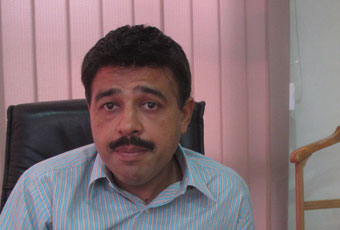
By Eriasa Mukiibi Sserunjogi
Telecom leader explains why it’s not panicked by competitors clawing at its market share
Since Warid Telecom announced a 50 percent call tariff cut mid-last month, the competition have, as expected, responded with similarly severe call tariff calls. Most mobile telephone service operators now charge Shs 3 per second from highs of up to Shs 9 per second in August.
The only exception has been MTN which continues to charge Shs 6 per second.
“There are no plans for tariff changes in the pipeline at the moment,” says MTN Chief Marketing Officer Isaac Nsereko, “Our customers get value for money since most of the subscribers are on MTN. Our customers can call for Shs 3 within the network if they accumulate five minutes of call time in a day.”
MTN’s reaction is unusual for a market leader.
This is the second time a Warid tariff cut is shaking up the market.
When Warid Telecom cut its call tariff to other networks to Shs 299 or Shs 5 per second (Peak) and Shs 249 (off Peak) in February 2008, it sparked off a similar price war as the competition scrambled to match its offer.
Back then market leaders, MTN, launched its MTN Zone which offered up to 99 percent discounts to customers depending on availability of capacity and Zain introduced its 12-hour free in-network calling.

Even in Kenya, when Zain touched off a call tariff war by cutting rates by 70 percent across all networks to Kshs 3, Safaricom, the market giant, swiftly responded with even sharper cuts.
Whereas Safaricom matched Zain’s rate across all networks, its customers were offered an even lower rate of Kshs 2 per minute to call within the Safaricom network.
By not cutting rates now, MTN, which has a solid customer base among businesses and corporate executives, could have calculated that its high-spending customers are “locked-in” and unlikely to shift because of slight tariff changes in the short run.
MTN could also be counting on “˜customer confusion’ which renders customers unable to switch to the competition, according to Charles Omagor, a marketing expert who is also the dean of the Faculty of Commerce at Makerere University Business School.
He says MTN offers packages like yellowmax, paygo standard, MTN zone and per second and a subscriber who is already confused on which package on the MTN network to choose is likely to get even more confused if tempted to switch to another network, where there are also several packages to select from. “Fearing that there could be even worse confusion elsewhere, the subscriber will most likely choose to stay where he is,” argues Omagor.
Some market analysts say MTN’s strategic inertia could encourage some companies, especially smaller firms aiming to grab market share, to up gang up against it.
Already, UTL Public Relations Manager Mark Kaheru said, four firms “” Warid, Zain, UTL and Orange are cooperating on masts whereby they no longer need to each erect a separate one. Warid CEO Madhur Taneja adds that a further area of cooperation could be the use of one radio transmitter to serve all the networks instead of each spending on a separate one.
But Omagor says the natural reaction from a marketer’s perspective is to pause and watch the competitors.
“Since there are four firms eyeing the market leader’s share, their actions in the tariff war initially daze the market leader,” he says.
Commenting on its reaction, MTN’s Nsereko told The Independent: “We are studying the situation and we can only respond when we think it is necessary. For now, we don’t think it so; we are not panicking.”
If MTN customers are locked-in, Warid’s tariff cut could, in fact, be groundwork for a turf war with Zain which is set to rebrand into its parent company name, Bhart Airtel, before close of the year.
Bharti Airtel is expected to implement in Uganda the low-cost “minute factory” model it pioneered in India.
If that happens, can Warid cut call tariffs even further from the Shs 3 per second?
Not likely, says Taneja, “Shs 3 is about the lowest tariff cut possible at the moment.”
He says with an interconnection charge of Shs 131 and a 30 percent tax on calls, charging Shs 3 per second (Shs 180 per minute) on cross-network calls means that telecom companies operate at a loss.
Taneja believes even MTN is neither able nor likely to knock out its rivals through tariff undercutting. He says MTN’s input-cost system is too high that it cannot realistically knock out its competitors via tariff undercutting.
High network maintenance and service offer costs, according to Taneja, make it untenable for MTN to outcompete Warid through pricing. Taneja says Warid studied the market and established a “sensitive input-cost system” to ensure competitiveness.
Government intervention?
Happenings across the border suggest that further tariff reductions remain a possibility. The lowest call rate in Uganda’s major East African Common Market partner, Kenya, is the equivalent of about Shs 70 per minute as opposed to Uganda’s Shs 180. Kenya’s interconnection charge is about Shs 50, while Uganda’s is shs 131.
In Rwanda, the uniform call rate is Rwf90 (about UShs 270) per minute, while it is TShs 5 (about Ushs 7.5) per second in Tanzania.
Taneja says that telecom companies have demonstrated more will to reduce call rates than government. “Whereas government reduced the interconnection rate by just 27 per cent, from shs 180 to 131, telecoms reduced call rates by over 60 per cent,” he says, “Telecommunications is an essential commodity like water and electricity; it has to be affordable.”
Taneja argues that the Uganda Communications Commission (UCC), the statutory body regulating the telecom sector, needs to cut the interconnection rate further to about Shs 30. He says the world’s average interconnection charge is about one dollar cent.
Uganda’s interconnection fee had been set by a London-based consultancy firm at shs 91 but haggling between UCC and other stakeholders that even saw market leader MTN sue the regulator, eventually settled it at shs 131. Taneja predicts that the interconnection rate will go further down in the next two years.
Taneja says the government can influence further tariff reductions through the tax levied, which currently stands at 30 per cent (12 per cent excise duty and 18 per cent value added tax).
Service to improve
For now, with further price cuts ruled out, market analysts predict a shift in the war front to focus on improving quality of service and variety, reduction in OPEX, and technological innovation.
Already there are indications that in the near future MTN aims to jazz up its mobile content portal to offer a richer variety of downloadable content and services, including ringtones, wall papers, games, news and information, sport results and caller tunes.
Through its MTN Play service, on offer in South Africa with possibility of roll-out to other countries including Uganda, MTN customers will for the first time experience digital content, MTN Chief Marketing Officer Ernest Fonternel said in a statement. MTN Play is designed to replace MTN Loaded.
But, Omagor says, newly established telecom firms, like Warid, could enjoy an advantage here, since they will not need to incur adaptation costs.
The established firms, like MTN, on the other hand, could need to invest in newer technology and other adaptation measures.This includes installing newer, more efficient technology, which could prove expensive.
New entrants Warid and Orange already offer some of these features. They could, however enable MTN to match Bharti Airtel/Zain’s “minute factory” model which is based on low infrastructure costs and end user charges meant to attract new users and achieve a high-volume communications business; exactly what MTN implemented to capture market share from Uganda’s first national mobile operator, Celtel, which is today’s Zain. Warid is implementing the same model.
To implement the low-cost model across the 16 countries in Africa where it operates, Bharti appointed IBM to deliver innovative networks and deploy new rich media content system, including music and video, which are affordable and suited for remote rural areas.
Long-term strategy
This means in the end, all operators have to cut and charge the same tariff as the competition because the core service they offer is the same, says Omagor.
Warid’s Taneja says this could prove difficult for some operators. He says telecom companies that launched earlier in Uganda, like Zain and MTN, premised their operations on a faulty model “” pursuing profit maximization through high tariffs. This model, he argues, narrows the market.
Warid’s model reverses this approach by signing up more subscribers and inducing them to make more calls to cover for the revenue loss occasioned by the reduction in rates, a model based on “lower margins, bigger business.”
With Ugandans calling for between 15 and 18 minutes per month on average, Taneja says there is need to significantly increase the volume of calls they make, a move he says can only be enabled by sharp tariff reductions. He adds that lower rates would also increase the subscription base, now estimated at just 30 percent. That is the future source of mobile telephone profitability in Uganda, according to Taneja.
According to Omagor, there are interesting scenarios to watch out for as the tariff war unfolds.
Continued tariff cuts, he says, could send a signal to other telecom operators “out there” that the profit margin in Uganda is high, prompting them to jump into the fray. “You cannot rule out the entry of a new operator on this account,” he says.
He says competing on price is costly. Telecom companies have to spend more on advertising, offering inducements like promotional offers. As a result, telecom companies will look for other avenues to cut costs. They may lay-off staff to reduce on labour costs. Even senior managers may not be spared as boards of directors turn tables on CEOs they suspect of mishandling the price war.
Worn out by the war, some of the firms could be taken over by others; others could resolve to merge.Omagor is brutal in his conclusion: “Once you start a price war, everyone gets hurt.” He was, of course, not talking about the customers.
 The Independent Uganda: You get the Truth we Pay the Price
The Independent Uganda: You get the Truth we Pay the Price



